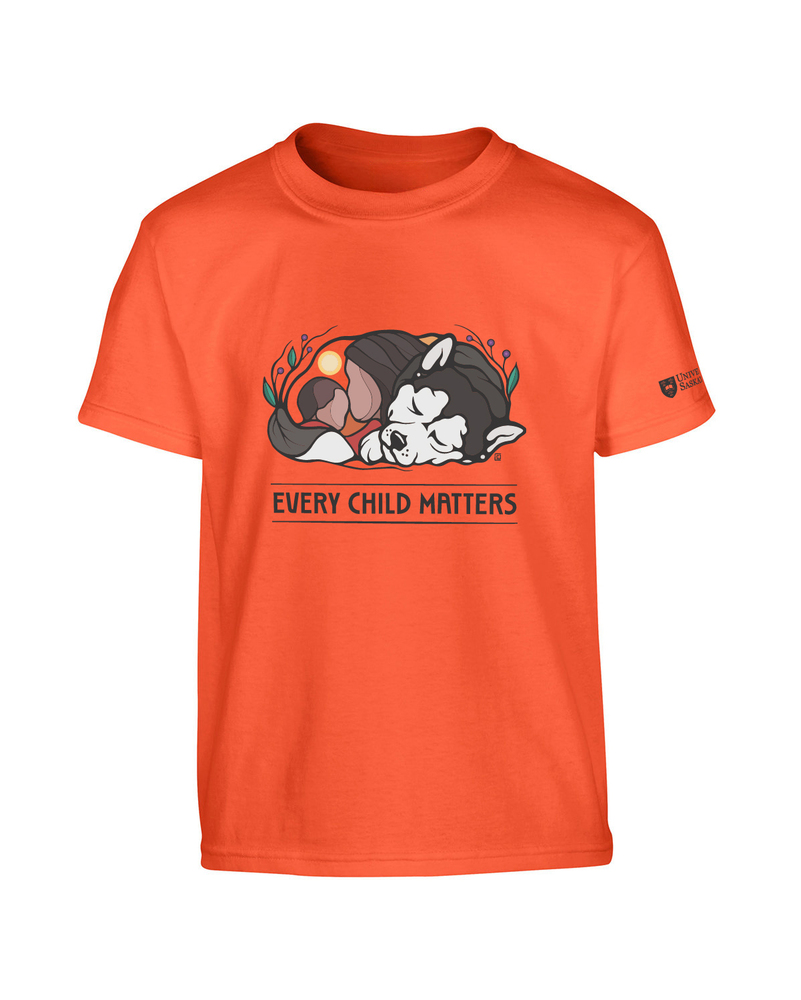"This artwork was created to support the University of Saskatchewan community in honouring the Indigenous population who were impacted by the Canadian residential school system. As an Indigenous artist and educator, I wanted to offer a fresh visual narrative—one that moves away from the more commonly seen symbols of handprints, feathers, and butterflies—I wanted to challenge myself to create something new, meaningful, and rooted in our community.
The shell of the image is of a husky pup. The husky—a design I worked with the University a couple of years ago—represents strength, resilience, and community. The younger version of the husky represents the innocence of a child. The nurturing and protection needed for that pup speak to the importance of family, protection, and reconciliation—values that were deeply disrupted by the residential school system.
Within the husky pup, there is an image of a mother holding her child. This represents the nurturing bond that a child needs to feel safe and valued. It speaks to the importance of healing, caring, and the responsibility of taking care of the young.
Surrounding them are Saskatoon berries—a symbol of the city of Saskatoon—with 6 berries in total representing Treaty 6 territory. These berries ground the artwork in place while also acknowledging the traditions and the enduring connection we have to this land.
I wanted this piece to intentionally be simple in its composition, yet layered with meaning. It invites viewers to reflect on the stories of Indigenous families, the impact of colonial systems, and the strength found in cultural continuity and care. Through this work, I hope to promote understanding, healing, and a deeper connection to truth and reconciliation."
- Chris Chipak
Chris Chipak is a visual artist and illustrator from Red Pheasant Cree Nation, currently residing in Saskatoon, Saskatchewan. He holds a Bachelor of Education from the University of Saskatchewan and embraces lifelong learning as a core part of his journey. Chris uses his art to promote cultural education and represent the spirit of Treaty 6 territory. His work reflects a deep desire to tell stories and foster meaningful connections to Indigenous culture. As both an artist and educator, he integrates animal teachings and land-based knowledge into his practice, creating visual narratives that invite reflection, learning, and connection.

